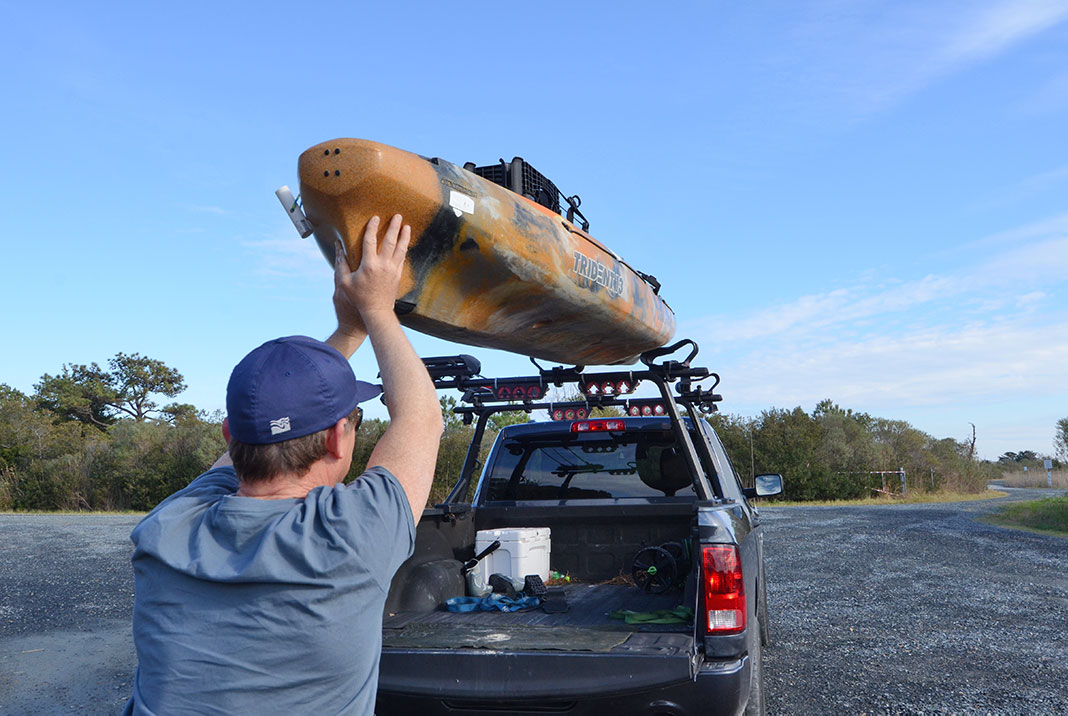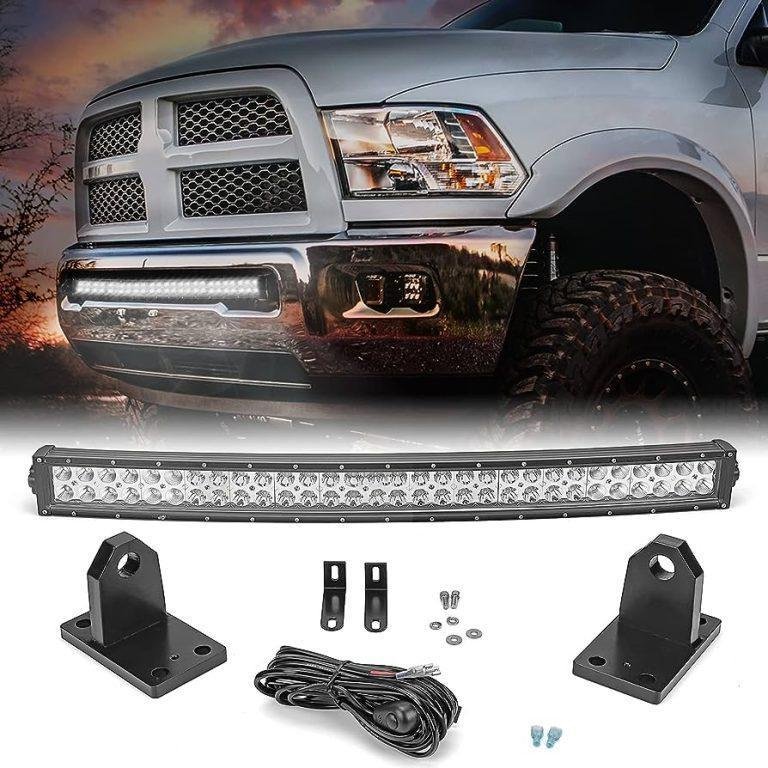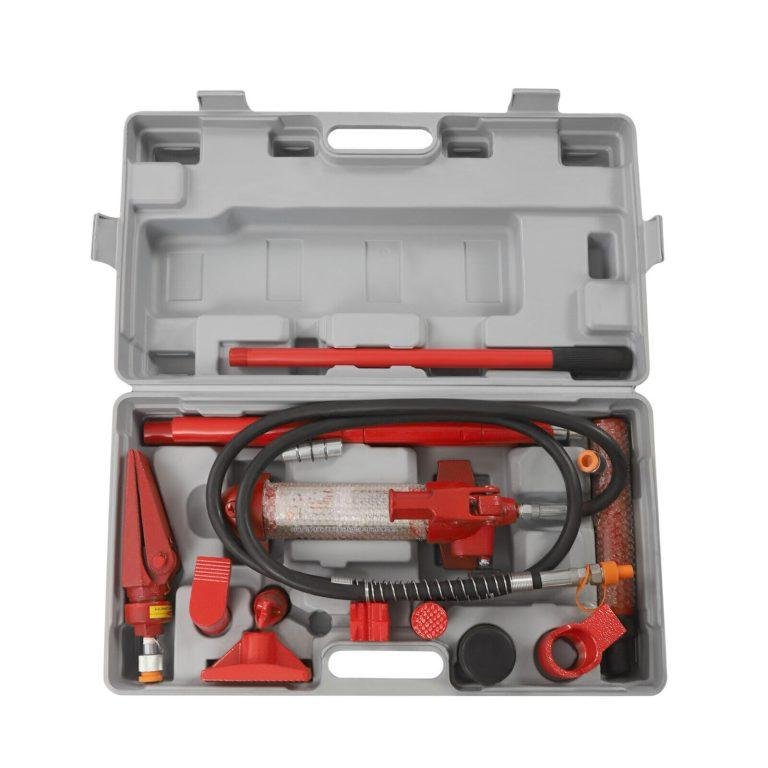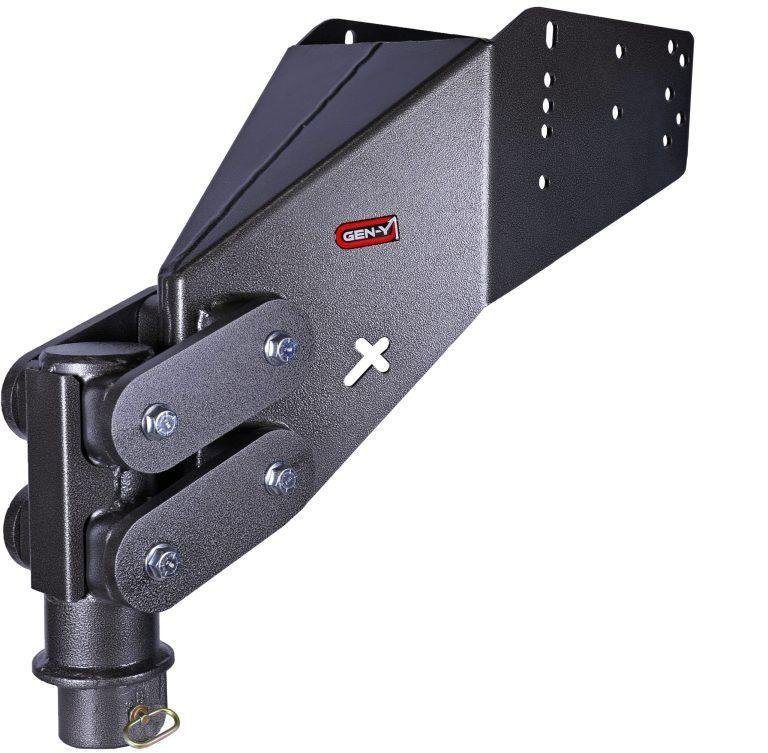Yes, it is possible to fit 4 kayaks on a roof rack if the rack is wide enough to accommodate them. Featuring a streamlined design, roof racks provide a convenient solution for transporting kayaks.
Kayaking enthusiasts can securely mount their kayaks on top of their vehicles, freeing up space inside the car and ensuring a smooth and safe journey to their desired waterways. However, it is important to ensure the roof rack is wide enough and has sufficient capacity to hold 4 kayaks without compromising stability or risking damage to the kayaks or the vehicle.
With careful positioning and strapping, kayakers can successfully transport 4 kayaks on a roof rack, enabling them to embark on thrilling adventures with their friends or family.

Credit: kayakanglermag.com
Understanding The Capacity Of Roof Racks
Roof racks have varying capacities, but can you fit 4 kayaks on one? It depends on the weight limit and size of the rack, as well as the length of the kayaks. Ensure you check the specifications to determine if it’s possible.
Roof racks are a convenient and popular solution for transporting various items, including kayaks. If you’re an avid kayaker, you may be wondering whether it’s possible to fit four kayaks on a roof rack. The capacity of a roof rack depends on several factors, such as weight limits and load distribution.
Let’s dive into these considerations in more detail:
Factors To Consider When Determining The Capacity Of A Roof Rack:
- Weight limits: Understanding the weight limits of your roof rack is crucial to ensuring safe transportation. Here’s what you need to know:
- Check the manufacturer’s guidelines: Each roof rack will have a specified weight limit set by the manufacturer. It’s important to review these guidelines to avoid overloading the rack.
- Consider the weight of each kayak: Kayaks can vary in weight depending on their size, material, and accessories. Calculate the total weight of the four kayaks you plan to transport to ensure it falls within the permitted limit.
- Account for additional accessories: Don’t forget to include the weight of any additional accessories, such as paddles and gear, when calculating the total load.
- Load distribution: Properly distributing the weight of your kayaks on the roof rack is essential for stability and safety. Here are some tips to help you achieve optimal load distribution:
- Use kayak saddles or j-cradles: These accessories can be attached to the roof rack to provide support and keep the kayaks secure during transportation.
- Follow the manufacturer’s instructions: Pay attention to any specific instructions provided by the roof rack and kayak accessory manufacturers regarding load distribution.
- Balance the weight evenly: Distribute the weight of the kayaks evenly across the roof rack to maintain balance and reduce the risk of instability.
Remember, it’s crucial to consult your vehicle’s user manual and the instructions provided by the roof rack manufacturer to determine the specific capacity and guidelines for your setup. Following these guidelines will help ensure a safe and secure transportation experience for your kayaks.
So, can you fit four kayaks on a roof rack? With the right roof rack capacity, proper weight distribution, and careful planning, it is indeed possible. Just make sure to adhere to the weight limits and load distribution guidelines to ensure a successful kayaking adventure.
Happy paddling!
Selecting The Right Roof Rack For Kayaks
Looking to fit four kayaks on your roof rack? Find the right one with our helpful guide, ensuring a secure and efficient transport solution for your outdoor adventures.
When it comes to fitting kayaks on a roof rack, selecting the right one is crucial. Not all roof racks are suitable for carrying kayaks safely and securely. In this section, we will explore different types of roof racks and their compatibility with kayaks.
Assessing the compatibility of your vehicle with a roof rack is also important, so let’s dive in!
Different Types Of Roof Racks And Their Suitability For Kayaks:
- J-style kayak racks:
- These racks have a j-shaped design, allowing you to transport kayaks on their sides.
- Suitable for kayaks of various lengths and sizes.
- Provides stability and reduces wind resistance during transportation.
- Ideal for vehicles with crossbars.
- Stackers:
- Stackers allow for the transportation of multiple kayaks.
- Can accommodate up to 4 kayaks or more, depending on their size and the rack’s capacity.
- Space-efficient design that allows you to stack kayaks vertically.
- Suitable for vehicles with crossbars or roof rails.
- Saddles:
- Saddles cradle and support the kayak’s hull.
- Can be adjusted to accommodate different kayak sizes.
- Provides extra stability during transportation.
- Compatible with vehicles equipped with crossbars or roof rails.
- Foam blocks:
- Foam blocks are a cost-effective option for carrying kayaks on a roof rack.
- Designed to conform to the shape of the kayak’s hull.
- Easy to install and remove.
- Suitable for vehicles without crossbars or roof rails.
- Inflatable racks:
- Inflatable roof racks are convenient for occasional kayak transportation.
- Lightweight and easy to store when not in use.
- Can support the weight of kayaks securely.
- Compatible with most vehicles.
Assessing The Compatibility Of Your Vehicle With A Roof Rack:
- Check your vehicle’s roof type:
- Different roof types require specific roof rack systems.
- Common roof types include bare roof, roof rails, and fixed points.
- Choose a roof rack system that is compatible with your vehicle’s roof type.
- Check your vehicle’s weight capacity:
- Ensure that your vehicle can safely support the weight of your kayaks and the roof rack system.
- Refer to your vehicle’s manual or consult the manufacturer for weight capacity information.
- Consider the number of kayaks you plan to transport:
- Determine if the roof rack system has enough space to accommodate the number of kayaks you intend to carry.
- Consider the dimensions and weight of your kayaks to ensure a proper fit.
- Look for compatibility with accessories:
- If you plan to use additional accessories, such as kayak stackers or tie-down straps, ensure compatibility with your selected roof rack system.
Remember to consider your specific needs and requirements when selecting a roof rack for your kayaks. Taking the time to choose the right rack will ensure a safe and hassle-free kayaking adventure.
Optimizing Storage For Four Kayaks
Discover the ultimate solution for optimizing storage and transporting four kayaks with a roof rack. Easily fit all four kayaks securely for your next adventure without any hassle or worry. Say goodbye to space constraints and hello to smooth sailing on the water.
Fitting four kayaks on a roof rack may seem like a daunting task, but with the right strategies, it can be done efficiently and securely. Whether you’re planning a kayaking adventure with friends or need to transport multiple kayaks for a rental business, optimizing your storage methods is essential.
In this section, we’ll explore different techniques for arranging kayaks on a roof rack.
Strategies For Arranging Kayaks On A Roof Rack
Arranging kayaks on a roof rack requires careful consideration to ensure their stability and prevent any damage during transportation. Here are some effective strategies to help you optimize your kayak storage:
- Utilize stackers: Kayak stackers are an excellent option when you need to transport multiple kayaks on your roof rack. These vertical supports create a secure and space-saving arrangement. By stacking kayaks vertically, you maximize storage capacity without compromising stability. It is vital to use high-quality stackers designed specifically for kayaks to ensure optimal safety.
- Consider kayak saddles: Kayak saddles are another great choice for organizing multiple kayaks. These specialized pads are placed on the roof rack bars and offer individual support for each kayak. By cradling the hull of each kayak, saddles offer improved stability during transportation. This arrangement also prevents kayaks from shifting or sliding around, reducing the risk of damage.
- Explore j-cradles: J-cradles are ideal for those who prefer a sleeker storage solution. These angled racks provide a secure way to transport multiple kayaks while creating a visually appealing arrangement. By placing the kayaks on their sides in the j-cradles, you can save space and easily secure them with straps. J-cradles are particularly suitable for longer kayaks due to their design.
- Proper strapping: Regardless of the storage method you choose, ensuring the kayaks are securely strapped to the roof rack is crucial. Invest in high-quality straps with reliable buckles that can withstand the pressure of highway speeds. Use multiple straps to secure each kayak, wrapping them around the hull and through the roof rack bars. Double-check the tightness of the straps before hitting the road to avoid any unexpected mishaps.
- Weight distribution: Maintaining an even weight distribution across your roof rack is essential for safe and efficient transportation. When arranging multiple kayaks, try to distribute the weight evenly by placing the heaviest kayaks in the center and lighter ones on the sides. This will help maintain vehicle balance and prevent any undue stress on your roof rack.
By following these strategies for arranging four kayaks on a roof rack, you can optimize your storage space while ensuring the safety and security of your kayaks during transportation. Selecting the right storage method, using reliable straps, and maintaining proper weight distribution will go a long way in providing a hassle-free and enjoyable kayaking experience.
Ensuring Safety And Stability
Roof racks can safely accommodate up to four kayaks, providing stability and peace of mind while transporting your precious gear. Safely secured, you can enjoy your adventures with the assurance that your kayaks are well-supported.
Importance Of Properly Securing Kayaks On A Roof Rack
When it comes to transporting kayaks on a roof rack, ensuring safety and stability is crucial. The last thing you want is for your kayaks to shift or incur damage while driving. Properly securing your kayaks not only protects them but also ensures the safety of other drivers on the road.
Here are some important points to keep in mind:
- Choose a reliable roof rack: Invest in a high-quality roof rack designed specifically for carrying kayaks. Look for one that is sturdy, durable, and able to handle the weight of your kayaks.
- Use kayak straps: Securely fastening your kayaks to the roof rack is essential. Use strong kayak straps made of high-quality material. Consider using bow and stern straps in addition to regular straps to provide extra stability.
- Positioning is key: Properly positioning your kayaks on the roof rack is crucial for stability. Place the kayaks flat on the rack, making sure they are centered and evenly distributed. Avoid overhanging or unevenly placing the kayaks, as this can cause shifting during transport.
- Secure the kayaks tightly: Ensure that the kayak straps are tightened securely, but not overly tightened to the point of damaging the kayaks. There should be minimal to no movement of the kayaks once they are properly secured.
- Check for stability: Before hitting the road, give your kayaks a gentle shake to check for any movement. If there is any shifting, readjust and tighten the straps as needed to ensure a secure fit.
- Consider additional padding: To prevent scratches and damage to your kayaks, consider using foam or padding between the kayaks and the roof rack. This provides an extra layer of protection during transport.
- Regularly check straps: During longer journeys, it’s important to periodically stop and check the straps to ensure they remain secure. Vibrations and road conditions can sometimes cause straps to loosen, so it’s better to be safe than sorry.
Remember, properly securing your kayaks on a roof rack is essential for both safety and the longevity of your equipment. By following these tips and techniques, you can have peace of mind knowing your kayaks are secure and ready for any adventure on the road.
Stay safe and enjoy your kayaking moments!
Weather Conditions And Additional Precautions
Roof racks are designed to accommodate multiple kayaks, but it’s important to consider weather conditions before loading them. Strong winds, rain, or snow can affect stability, so always check the forecast and take additional precautions, such as securing the kayaks properly and using straps or covers for protection.
Understanding The Impact Of Wind, Rain, And Extreme Temperatures On Kayak Storage
Transporting kayaks on a roof rack requires careful consideration of the weather conditions you may encounter along your journey. It is essential to understand how wind, rain, and extreme temperatures can affect the security and condition of your kayaks. By taking the necessary precautions, you can ensure a safe and enjoyable trip.
– Wind:
- Strong wind can cause instability and affect the aerodynamics of your vehicle, making it challenging to control and increase the risk of accidents.
- When loading kayaks onto a roof rack, ensure they are securely strapped down using proper fasteners and tie-downs.
- Consider using additional support accessories such as wind deflectors or spoilers, which can help reduce wind resistance.
- Be mindful of crosswinds, especially when driving at high speeds. Adjust your driving accordingly to maintain stability.
– Rain:
- Rain can create slippery conditions, potentially leading to accidents or damage to your vehicle and kayaks.
- Before hitting the road, check that your roof rack and kayak are waterproofed or covered with appropriate accessories, such as kayak covers or tarps.
- Securely fasten your kayaks with appropriate straps or ropes to prevent shifting or movement during wet conditions.
- Maintain a safe driving speed to minimize the risk of hydroplaning, especially during heavy rainfall.
– Extreme Temperatures:
- Extreme temperatures can have various effects on your kayaks, including warping, cracking, or melting.
- Avoid leaving your kayaks exposed to direct sunlight or extreme heat for an extended period, as this can lead to damage.
- Consider using a protective coating or uv-resistant coverings that can shield your kayak from the sun’s harmful rays.
- During winter or extremely cold conditions, protect your kayaks from freezing by wrapping them in insulating materials or storing them indoors if possible.
Necessary Precautions When Transporting Kayaks On A Roof Rack
– Proper Loading And Securing:
- Ensure the roof rack system you use is designed specifically for carrying kayaks and can withstand the weight and dimensions of your kayaks.
- Familiarize yourself with the manufacturer’s guidelines for loading and securing kayaks onto the roof rack.
- Position the kayaks parallel to the vehicle’s roof, evenly distributing the weight to maintain balance and stability.
- Use appropriate straps or rope to secure the kayaks tightly to the roof rack, preventing any movement during transportation.
– Regular Inspections:
- Before each trip, inspect the roof rack system, ensuring all components are in good condition and functioning properly.
- Check the straps, tie-downs, and fasteners for any signs of wear or damage. Replace them if necessary.
- Examine the kayaks for any cracks, dents, or other potential issues that could compromise their structural integrity.
- Regularly check and retighten the straps during your journey to ensure the kayaks remain securely in place.
– Height Clearance:
- Take note of the height clearance of your vehicle with the kayaks loaded on the roof rack.
- Be cautious when passing under low bridges or structures to avoid collisions or damage to the kayaks.
- Plan your routes accordingly, considering any height restrictions that may pose a risk to your loaded kayaks.
– Defensive Driving:
- When transporting kayaks on a roof rack, your vehicle’s center of gravity is altered, making it more susceptible to wind gusts and sudden movements.
- Maintain a safe driving speed and maintain a greater following distance to allow for any potential emergency stops or turns.
- Be mindful of the increased height and size of your vehicle, especially when changing lanes or maneuvering through tight spaces.
By understanding the impact of weather conditions and adhering to necessary precautions, you can safely transport your kayaks on a roof rack, ensuring a fantastic adventure while protecting your equipment.
Alternatives To Roof Racks For Kayak Transportation
Looking for alternatives to roof racks for transporting kayaks? Wondering if you can fit 4 kayaks on a roof rack? Explore other options for kayak transportation and find out the best solution for carrying multiple kayaks without a roof rack.
Looking to transport your kayaks but don’t have a roof rack? No worries! There are several alternatives that can effectively carry multiple kayaks, including kayak trailers and truck bed racks. Each option has its own pros and cons, so let’s explore them in detail:
Kayak Trailers:
- Convenient and easy to use: Kayak trailers provide a hassle-free solution for carrying multiple kayaks. Simply hitch the trailer to your vehicle and load the kayaks onto it.
- Capacity for multiple kayaks: Most kayak trailers can accommodate several kayaks, making them ideal for group trips or family outings.
- Protects kayaks during transport: Trailers often come with padding, secure tie-downs, and even enclosed compartments to protect your kayaks from damage.
- Requires extra storage space: Kayak trailers can take up quite a bit of storage space when not in use, which may be a concern for those with limited space.
Truck Bed Racks:
- Utilizes existing vehicle: If you own a truck, using a truck bed rack is an excellent option. It takes advantage of the truck’s bed to transport kayaks securely.
- Versatility: Truck bed racks can be customized to fit different kayak sizes and quantities, giving you flexibility in transporting kayaks.
- Easy loading and unloading: With a truck bed rack, you can easily load and unload kayaks without the need for heavy lifting or securing straps.
- Limits truck bed usage: While truck bed racks are great for kayaks, they may limit the use of the truck bed for other purposes during transportation.
- Weather exposure: Unlike kayak trailers, truck bed racks leave your kayaks exposed to the elements, so additional precautions may be necessary.
These alternatives provide viable options for transporting multiple kayaks without a roof rack. Consider your individual needs, available storage space, and preferred level of kayak protection when deciding which option is the best fit for you. Happy kayaking!
Frequently Asked Questions Of Can You Fit 4 Kayaks On A Roof Rack?
How Many Kayaks Can You Fit On A Roof Rack?
A roof rack can accommodate multiple kayaks, depending on their size and the size of the rack itself. Generally, a roof rack can fit 1-4 kayaks, but it’s important to consult the specific specifications of your vehicle’s roof rack to ensure proper fitment.
Consider the weight capacity and dimensions of the rack, as well as the width of the kayaks. This will help determine how many kayaks you can safely transport. It’s also advisable to use additional straps or tie-downs to secure the kayaks properly.
Remember to follow the manufacturer’s guidelines and seek professional advice if needed to ensure a safe and secure transportation of your kayaks on a roof rack.
Can You Put 3 Kayaks On A Roof Rack?
Yes, you can put 3 kayaks on a roof rack. Ensure the rack is sturdy and appropriate for carrying kayaks.
How Many Kayaks Can You Fit On A Suv?
An suv can typically fit 1-2 kayaks on its roof rack, depending on the size and weight of the kayaks.
Can You Stack Kayaks For Transport?
Yes, you can stack kayaks for transport. Stacking kayaks helps maximize space and makes it easier to transport multiple kayaks at once. However, it is important to take certain precautions when stacking kayaks. Ensure that the bottom kayak is stable and secure to prevent damage.
Use padding or foam between each kayak to provide cushioning and prevent scratches. Additionally, make sure the kayaks are securely strapped together to avoid shifting during transport. It is also advised to use proper kayak racks or roof racks on your vehicle to safely transport the stacked kayaks.
Overall, stacking kayaks for transport is a convenient and efficient way to transport multiple kayaks at the same time.
Conclusion
To conclude, you now have a clear answer to the question, “can you fit 4 kayaks on a roof rack? ” The answer is yes, but it depends on the type of roof rack you have. While some roof racks may only accommodate two kayaks, there are others specifically designed to fit up to four kayaks securely.
Make sure to check the weight capacity and dimensions of your roof rack to ensure it can handle the load. Additionally, you may need to utilize kayak stackers or j-style kayak carriers to optimize the space and provide a safe and secure fit.
Remember to distribute the weight evenly and use proper tie-down straps to keep the kayaks stable during transportation. With the right equipment and careful planning, fitting four kayaks on a roof rack is indeed possible, opening up more opportunities for adventurous water excursions.
Happy kayaking!






